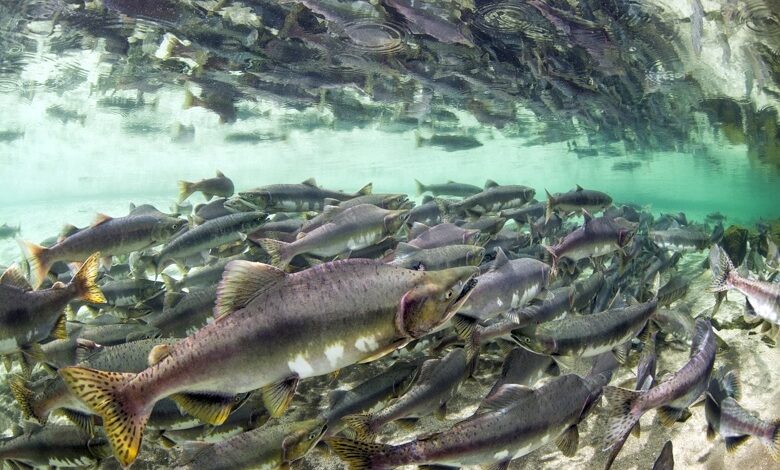Invasion of Pacific Pink Salmon Threatens Nordic Atlantic Salmon Rivers

Stretching along the border between Norway and Finland lies a pristine natural wonder, the world’s greatest Atlantic salmon river. Known as the Tanaelva or Tana in Norway and the Tenojoki or Teno in Finland, this river is celebrated for its pure and unpolluted waters as it meanders through unspoiled regions from Norway’s northernmost county, Finnmark, into Lapland.
However, the tranquility of this majestic river has been disrupted, as its waters and banks are now littered with decaying fish, emanating a pungent stench of death. Aino Erkinaro, a doctoral researcher from the University of Oulu in Finland, describes the scene as dramatic and overwhelming. The culprit behind this ecological calamity is not the native Atlantic salmon but an invasive species—the Pacific pink salmon. The crisis has prompted both Norway and Finland to declare a state of emergency.
Also referred to as pukkellaks or humpback salmon due to their characteristic bulging appearance, pink salmon were introduced into Russia’s Kola Peninsula in the 1950s in an attempt to bolster the local economy. These fish lead a unique life cycle, dwelling in oceans and returning to the same rivers every two years to spawn before succumbing to death. However, pink salmon often deviate from their designated river, leading them to establish new habitats. Over time, their westward migration has accelerated, driven in part by changing climate conditions, and now they find their final resting place in the Tana River.
The irony of an abundance of salmon in regions heavily reliant on this resource has not gone unnoticed. In theory, pink salmon could be a viable food source when caught at sea or upon entering the river, predominantly within Norwegian territory. However, since pink salmon are a relatively recent addition and smaller in size than Atlantic salmon, there is no established industry for them, and only a handful of individuals hold licenses to fish and sell them, as explained by EirikFrøiland of the Norwegian Environment Agency.
At the upper reaches of the Tana River, within Finnish territory, pink salmon spawn, meet their demise, and undergo decomposition. This limited window of time makes it impractical to catch and consume them, according to TapioHakaste from Finland’s agriculture and forestry ministry. The invasive nature of pink salmon poses a particular challenge for the Sámi people inhabiting the valley, where Atlantic salmon and traditional fishing practices have played a central role in Indigenous culture for centuries.
Experts express deep concern over the impact of Pacific pink salmon on local Atlantic salmon populations, which are already under duress. This year, several rivers in Norway have witnessed a significant decline in Atlantic salmon, sea trout, and char, leading to premature fishing closures. In Finland, the scarcity of Atlantic salmon had reached a point where most fishing of this species was banned for two consecutive years. A national report revealed a startling drop in the estimated number of female Atlantic salmon in Finnish rivers, ranging from 42% to 78%, depending on the river, compared to previous averages, with the report characterizing these changes as “grim.”
The ecological ramifications of the Pacific pink salmon invasion in these rivers remain uncertain. There are fears that these fish might carry pathogens, such as Renibacteriumsalmoninarum, responsible for bacterial kidney disease, and Piscirickettsiasalmonis, the culprit behind piscirickettsiosis, which could potentially infect Atlantic salmon or other components of the marine ecosystem. Moreover, there is a looming threat of pink salmon outcompeting their Atlantic counterparts, consuming their food sources, and encroaching upon their habitat.
The invasion of Pacific pink salmon in the pristine waters of Nordic Atlantic salmon rivers underscores the fragile balance of ecosystems in the face of changing environmental dynamics, highlighting the urgency of comprehensive conservation efforts to safeguard these vital aquatic habitats.
News Mania Desk / Agnibeena Ghosh 3rd October 2023






